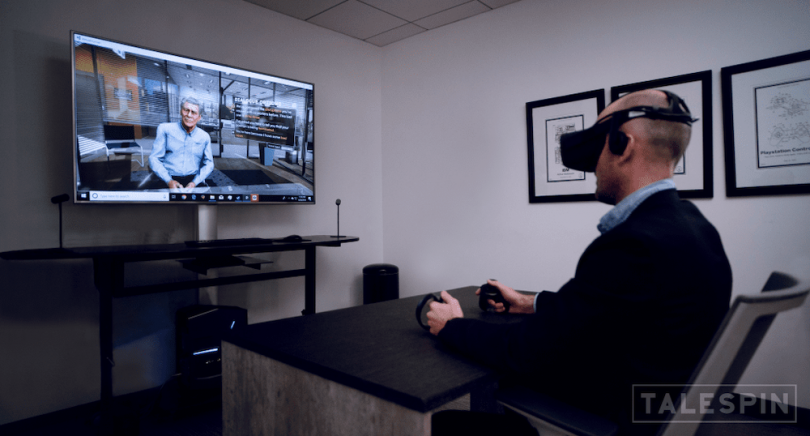A few weeks ago, we, along with 55 million of our peers, tuned in to view the NFL’s first-ever Virtual Draft. The result was a strange, occasionally awkward, sometimes hilarious, and all-around surreal experience. If you google “Virtual NFL Draft, you’ll find articles with varying opinions on the topic. Overall, most reports have indicated positive feedback from the event; with participants, hosts, and viewers alike chiming in to say, “This went way better than expected. Could this be the start of a new era in sports?”

The Virtual Draft was indeed a societal experiment, a test run to see if this whole virtualization thing could work. And if it did work, do we harbor the stance and run with it? Schools, businesses, even the film industry have already jumped on the simulation train. What other industries are next?

And the first fully remote awards show goes to…KCA 2020. Nickelodeon’s annual Kids Choice Awards will spearhead the new trend of virtual award ceremonies and televised events during the pandemic. While theme parks and resorts are closed, Walt Disney World continues its traditional Happily Ever After Fireworks via a virtual rendition, available on YouTube.
Billboard.com has been consistently providing fans’ updates on the latest virtual concerts and live streams available to view online. Many artists and entertainers are choosing to perform live shows across different online platforms instead of canceling or postponing their physical tours. If the feedback and viewership prove positive, there is a likelihood that we may see more live stream performances in the upcoming post-COVID future.
Hello, Telemedicine. Before the coronavirus crisis struck, few would have expected that normalizing virtual healthcare would ever really be more than a “wish list” item for medical professionals. Beginning as a combined effort to provide healthcare services while flattening the curve and spread of COVID-19, telemedicine popularity has risen exponentially in the past few months – and some health experts believe that the market is here to stay. According to the Manhattan-based NYU Langone Health system, the number of daily video visits soared from 80 (March 1st) to nearly 8,000 (April) in less than two months. (Source: Newsday) By leveraging audio/video conferencing technologies and mobile applications for general doctor/patient interactions and even virtual pharmacy prescriptions, telemedicine minimizes the need for in house doctors’ visits and allows for more flexible, on-demand healthcare support.
“The convenience of telehealth means patients are more likely to keep preventive care and follow-up appointments, leading to better health outcomes” – Iris Berman, Vice President for Northwell Health
The Future is Square. Now that a good portion of the world has settled into WFH mode, just hearing the phrase “Zoom Meeting” should allot quite a few collective shudders and eye-rolls. Zoom fatigue is real, but a futuristic concept created by Argodesign called the Square may be the remote renaissance we need to enter the next phase of social virtualization. The idea: a mock window created from an LCD screen, its frame concealing multiple smaller cameras. Together, the cameras combine images to create a 3D version of you (a refreshing alternative to the flat zoom screen standard). The Square goes on the wall behind or next to your desk, and when you attend video meetings with your coworkers, the “pod mode” of the Square creates a blended simulation with the video geometry (between you and your colleagues’ screens), morphing the combined visuals into a virtual conference room.
Even though the Square is still in theory mode, Argodesign’s concept realistically aligns our current/foreseeable technological environment capabilities with our society’s projected vision of the future.
“The future of work will enter on a private, virtual workspace that immerses the user in a 3D desktop to provide the ideal work environment”
Companies like the Windows Mixed Reality platform and Oculus Rift are already providing a virtual desktop experience for their users. Jay Latta, an Emerging Technology Strategist, foresees that the future of work will “center on a private, virtual workspace that immerses the user in a 3D desktop customized to provide the ideal working environment.” Utilizing multiple technologies, they can simulate a desk space and operating system into one environment resembling their workspace and computer. They even go so far as allowing the customization of the space to make it feel more personalized to the user.
Matterport has already implemented the use of 3D mapping technology that allows users to view the inside of homes and work environments for collaboration between real estate brokers and clients, as well as contractors for renovations and design strategy. The company takes 360-degree images of each room, then renders them together to form a three-dimensional environment that you can move from room to room with the click of a mouse. Could this be a technology we see integrated as a new futuristic workspace?

Talespin is a company that focuses on corporate training and workforce development that has already employed the use of virtual reality for outside companies who have contracted them to train their employees. They immerse their clients in environmental situations like virtual sales cold calls, performance reviews, and even mock firings. Their simulations are so immersive that a manager reportedly cried during a mock-termination when engaging with the AI conversation.
As more companies continue to explore VR in greater depths, the technology remains ever-changing. Manufacturers and developers are conceptualizing and testing lightweight headsets the size of a pair of sunglasses. While this may be a few years out, we are already experiencing a shift into the future with the constantly evolving technology.
The future can expect to see a global shift in the very near future with 60 to 70% of companies continuing to work from home, greatly reducing their operational expenses and travel times. While companies continue to prove their abilities to operate remotely (at a full, if not greater capacity) and office spaces sit vacantly, the question remains: do we really require this much overhead as a company?





